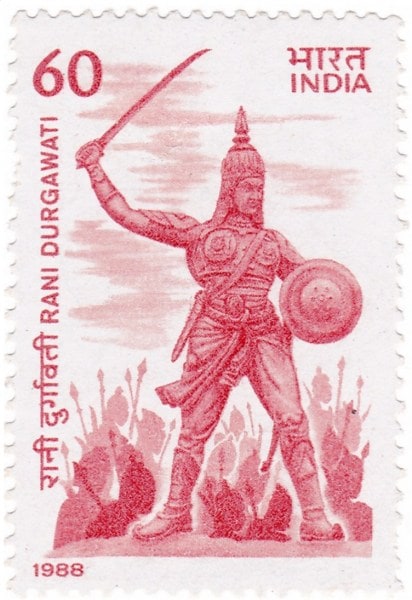RANI DURGAVATI GAURAV YATRA
1. Context
The Shivraj Singh Chouhan-led BJP government in Madhya Pradesh launched the six-day Rani Durgavati Gaurav Yatra on (June 22 2023). Home Minister Amit Shah inaugurated the rally in Balaghat, while the CM also marked June 24, 2023. when the queen is believed to have died while fighting the Mughals in the mid-16th century as a day of sacrifice
Starting from Balaghat, Chhindwara, Singrampur (Damoh district), Dhauhani, and Kalinjar Fort in Uttar Pradesh – the natal home of the queen – the five yatras will reach Shahdol in MP on June 27, 2023
2. About Rani Durgavati
- She fought Mughal emperor Akbar and his commander Asaf Khan and gave the ultimate sacrifice
- Rani Durgavati is said to have been born in 1524, in Mahoba’s Chandela dynasty
- The region comes under present-day Uttar Pradesh, near the southern border with MP
- Her father was Raja Salbahan of Ratha and Mahoba, and the Chandelas were known for building the famous Khajuraho temples in the 11th century
- She was later married to Dalpat Shah, the son of the Gond King Sangram Shah of the kingdom of Garha-Katanga
- This kingdom included the Narmada Valley and parts of northern MP
- It was first welded together by Sangram Shah and is noted as one of the most powerful kingdoms of the Gond tribe
- Durgavati, however, was widowed in 1550, a few years after her marriage. Her young son Bir Narayan presided over the throne in name and she then “ruled the country with great vigour and courage.”
- It was noted at the time that she was so intent on hunting tigers that “whenever she heard that a tiger had appeared she did not drink water until she shot it.”

3. Mughals attack on Garha- Katanga
- The period of the mid-16th century as one of early Mughal expansion in India (between 1556-76) under Akbar
- During her reign, Durgavati fought with Baz Bahadur, the sultan of the neighbouring Malwa who was eventually defeated by Akbar, But the frequent battles between the two adjoining states continued even after the takeover
- The queen and her generals managed the affairs of the kingdom for 16 years
- There was evidence of trade with other kingdoms in the form of their currencies being found there and of public works being carried out, such as the construction of a large public reservoir near Jabalpur that is now called Ranital
- Abul Fazl, the court historian of Akbar who chronicled these years in Akbarnama, described Durgavati as a combination of “beauty, grace and manlike courage and bravery”
- He adds that the prosperity of the kingdom was such that people paid their taxes in gold coins and elephants
- The Mughal governor of Allahabad, Asaf Khan, also took an interest in attacking Garha-Katanga, attracted by tales of the queen
- Khan then went to the region with 10,000 cavalry. Some semi-independent rules here also seized on the opportunity as one to overthrow the queen. She was, therefore, left with a small force
- The queen entered the battlefield and situated her troops in a place called Narhi, which was located in a thick forest, reached after crossing rivers, and was naturally difficult to breach
- She suggested attacking the enemy forces upfront as they could not remain hidden for long
- They allowed some Mughal forces to come through the narrow ravines peculiar to the region, before surrounding them. The first battle was therefore won by the Gond queen
- However, soon the Mughals fortified the area and overwhelmed the Gonds. While fighting them in battle, she was struck by two arrows and it is believed she stabbed herself with her dagger to not surrender to the Mughal forces
Source: indianexpress




